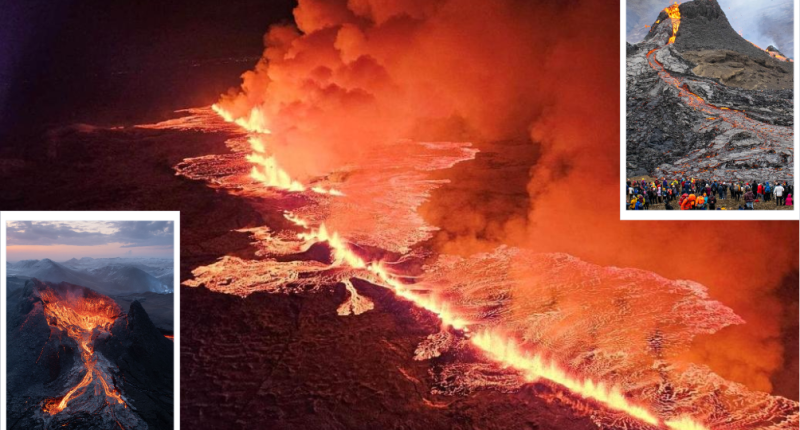Report Iceland volcano eruption today – In a dramatic turn of events, Iceland has declared a state of emergency following a volcanic eruption that has caused significant disruption and concern. The eruption, which has been described as violent, has led to a series of actions aimed at managing the situation and mitigating the impact on the population.
The eruption, which occurred on the Reykjanes Peninsula, has resulted in lava damaging key hot water pipes, leading to a call for residents to limit their use of hot water and electricity. This is due to the potential for further damage to these pipelines, which could take days to repair. The situation has also raised concerns about the safety of other crucial pipelines near the Svartsengi power station, which could be at risk if the lava flow continues unabated.

The eruption has been particularly notable for its visual impact, with aerial footage showing a new 3km-long fissure spraying lava high into the air. This has not only affected the immediate area but has also caused smoke illuminated by the lava to be visible in the capital, Reykjavik, which is roughly 40km away. The eruption has also forced the closure of the Blue Lagoon, one of Iceland’s top tourist attractions, and is expected to remain closed for the foreseeable future.
In response to the eruption, the Icelandic Department of Civil Protection and Emergency Management has been working to ensure the hot water supply for over 20,000 people who have had their access disrupted. Schools in the affected areas have also been closed, and while the Keflavik Airport has been impacted, its services are reported to be running as usual.
Volcanologist Dr. Evgenia Ilyinskaya has provided insights into the situation, noting that while the Svartsengi power station is somewhat protected by barriers, there are additional pipelines supplying hot water to a further 30,000 people across the peninsula that are at more immediate risk. She expressed hope that the speed of the lava flow would soon decrease, similar to previous eruptions, and that the pipeline would remain undamaged.
The eruption is part of a series of volcanic activities in southern Iceland, which have involved lava pouring from fissures rather than volcanic explosions that cause ash to be sent into the atmosphere, as seen in the 2011 eruption. This pattern of activity is leading scientists to believe that the area is entering a new volcanic era, with a series of relatively small, short-lived eruptions expected to continue. The last period of volcanic activity on the Reykjanes Peninsula was 800 years ago, and this is now the sixth eruption since 2021.
The duration of such activity is uncertain, with scientists speculating that it could last for many years or even centuries. This ongoing volcanic activity has significant implications for the region, affecting not only the immediate environment but also the broader geological and climatic context of Iceland, which sits over the Mid-Atlantic Ridge, the boundary between two of the largest tectonic plates on the planet.
The volcanic eruption in Iceland has led to a state of emergency, with significant disruptions to infrastructure and daily life. The situation is being closely monitored by authorities and scientists, who are working to manage the impact and ensure the safety of the population. The eruption is part of a broader pattern of volcanic activity in the region, indicating a potential shift in the area’s volcanic behavior.
Latest crime update from around the world: Twin stabbed to death after sisters knifed outside Brooklyn bodega







